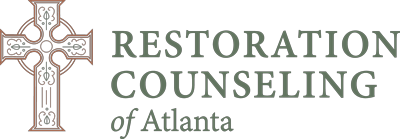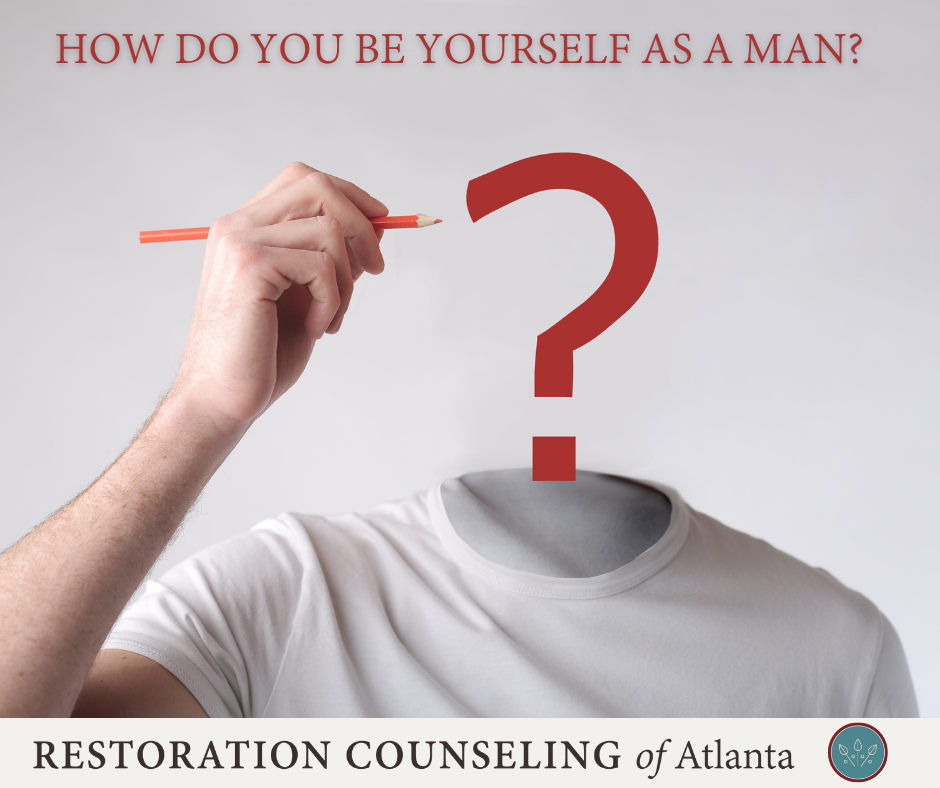Be Yourself?
“The most important thing about a man is not what he does. It is who he becomes”—Dallas Willard
“Every man dies, but not every man lives.”—William Wallace
These quotes beg the questions: How do you live life successfully? And, how do you become who you are, as a man? These are complex and existential questions that shape us as we cannot answer one without the other. Living life successfully is living a life fulfilled. Living a successful, fulfilled life requires being intentional in your journey to discover who you are.
The Problem
Our Western culture generally defines a life of worth and purpose as having happiness and freedom by honoring a moral choice to be who we are. We accomplish these things by working hard and being successful, whatever the cost. However, we inevitably become unsuccessful if we lose what we define as life-giving. In other words, our pursuit of success, without a clear understanding of self, is setting us up for failure. People who are ‘successful’ may find themselves depressed or feeling inadequate. At the end of the day, a man needs to know who he is and that ‘I am enough.’ We live in a performance-based, individualistic society. Addictions of various kinds are common self-protective behaviors to cope with our hurt and isolated, inauthentic selves.
“It is the nature of the false self to save us from knowing the truth about our real selves, from penetrating the deeper causes of our unhappiness, from seeing ourselves as we are—vulnerable, afraid, terrified, and unable to let our real selves emerge.”[i]
Who am I?
Have you ever been frustrated when people say, “Just be yourself,” or “Be a man!” I know I have, and I found myself feeling embarrassed, inadequate, helpless, lost, and powerless because I was confident I knew who I was. Yet, I would nod in agreement and give the version of me that I believed others were expecting. Some men settle with the understanding of self that provides a sense of stability, comfort, and temporary success. Others whole-heartedly pursue answers to these questions but are left feeling defeated, lost, or unfulfilled.
Our Inauthentic Selves
To deepen the double bind we put ourselves in, we spend more time focusing on coping with our inauthentic selves than we do focusing on our true selves. Dr. Allender exclaims, “Most people have spent more time studying a map to avoid getting lost on a trip than they have spent studying their life so they’ll know how to proceed into the future. Why will we read various op-ed pieces to help clarify our views on a controversial topic, but ignore our past, which helped form our most important views?”[ii] Maybe we know we are being inauthentic but are afraid to let others see our internal struggles.
Know Your Story
One of the critical ingredients for moving away from inauthenticity is knowing our story. Dr. Townsend speaks more to knowing our self, saying, “Boundaries define us. They define what is me and what is not me. Knowing what I am to own and take responsibility for gives me freedom. If I know where my yard begins and ends, I am free to do with it what I like.”[iii] In other words, to know who we are, we need to know who we are not.
A Visual Depiction of Inauthenticity
Phil Hardin excellently describes various depictions of our inauthentic selves by describing animals—the bull, the chameleon, and the turtle. It is essential to know that each animal exists within all of us, but it is critical to acknowledge which one we revert to most. Furthermore, it is crucial to understand that each animal representing our inauthentic self comes from a place of wounding, self-protection, and lack of appropriate boundaries. It is a place of fear, and thus control of ourselves or others is necessary not to be hurt.
The Bull
The bull[iv] is the man who can be aggressive or passive-aggressive but is ultimately deceptive to himself. He has many blind spots he cannot see, but others can see plainly. The bull often affects others, but he does not necessarily care how he impacts others, nor do others appropriately affect him. In other words, he is the proverbial “snorer” who gets restful sleep but is always confused why those around him do not rest well. When confronted or proven wrong, he will prove himself right despite the relational cost. Ultimately, he may be rigid, unopen to different perspectives, and lack awareness of himself and his emotions.
1 John 1:8-9 describes the bull and what he needs to do: “If we say we have no sin, we deceive ourselves, and the truth is not in us. If we confess our sins, He is faithful and just to forgive us our sins and to cleanse us from all unrighteousness.” For the bull to be authentic, he must learn to receive feedback, become curious about himself and others, be humble, admitting he does not know all the answers, and learn to own his emotions.
The Chameleon
The chameleon[v] is the man who lacks a personality of his own and is on a rollercoaster of depression and excitement. He knows his internal struggles but lives a life of exhaustion trying to please others, fit in, and feel included. In other words, he has the proverbial poker face; he knows his cards but is careful that others not to see his true hand. He is the “yes man” who has difficulty saying “no” or letting people down. If there is a sign of danger, he adapts to keep peace and balance. He is sincere in learning about other people and asks many questions, but may not reflect about himself. Therefore, he finds himself desperate to be known, accepted and loved. For the chameleon to be authentic, he must learn to reveal himself. He must be vulnerable with others, implementing boundaries by saying “no,” expressing his emotions, and allowing others to care for him rather than always being the caretaker.
The Turtle
The turtle[vi] is the man who does not know himself, nor do others know who he is. He does not challenge himself or others and does not seek growth. He lives a safe, comfortable, and uneventful life unless someone kicks him off his log. The turtle is rigid, stays at surface level, and does not risk. If there is a sign of danger, he retreats alone into his shell to protect himself. For the turtle to be authentic, he must learn to trust. He must confront his fears of being vulnerable with others, explore the depth and story of who he is, and he must allow others to help him meet his needs. Ultimately, the turtle must learn to trust others and express his deeper emotions.
Becoming Real
By living life inauthentically, we will never truly get to know who we are. James Masterson wrote, “The false self plays its deceptive role, ostensibly protecting us but doing so in a way that is programmed to keep us fearful—of being abandoned, losing support, not being able to cope on our own, not being able to be alone.”[vii]
As men, we want to be wanted, noticed, seen, and invited to belong. [viii] We yearn for love. We are made for love. Yet we must be honest and real and dwell on the fact that God does not create mistakes or failures. He created us and it is good. However, we are not experiencing reality if we do not accept our sin and character defects. We acknowledge that there are struggles, but these do not define us. We are all given dreams and passions, yet we sometimes pursue what others say we should be passionate about to be “successful.” Thus, we end up tormented.
The Lion
The lion[ix] represents the courageous man, dedicated to a growing awareness of himself with others. He has proverbial intimacy (he has “into see me” and “into seeing others”). There is willingness to reveal his shortcomings and struggles to others. He wants to be in community with fellow men. The lion is on the journey of being fathered by God and other godly men, discovering who God created him to be. He is open and invites accountability. The lion is humbly confident to give and receive constructive feedback. He trusts those in his close community and expresses his emotions and needs. And the lion has dreams and passions. There is respect in a man who is authentic, self-aware, and open to others and God.
In the animal kingdom, the lion is the king of the jungle despite other animals being stronger like the tiger or bigger like the elephant. Animals have an instinctive fear of the lion; while the tiger is stronger, tigers still surrender more readily when confronted by a lion[x].
Moreover, what makes a lion king of the animal kingdom is profound. A tiger lives mainly isolated from other tigers, but a lion strengthens and knows surviving is achieved within a pack. When lions join together, they are called a pride. When men join together, they become stronger and wiser, which men can be proud of.
Helpful Questions in Becoming a Lion
- What happened to me in my story? And what are my relational wounds?
- When and what were the defining moments of my life?
- What am I most hopeful for?
- Who do I want to be?
- What do I truly love? And what do I truly hate?
- What am I most afraid of?
- What do I truly want in this life?
- What do I truly need in this life?
- What is keeping me stuck that I can control?
- Am I in a community of men willing to be honest and keep me accountable to living authentically in truth?
micah@restorationcounselingatl.com, ext. 158
Micah comes from a Christian background and enjoys working with adolescents and families, as well as couples. His focus is coming alongside families, adolescents, and teenagers who desire to find help and resolution. His other focus is helping couples who want to understand and love their partner better to enhance their marriage. He also helps couples who are in conflictual relationships that are struggling with disconnection and isolation.
Resources
[i] Manning, B. (2015). Abba’s child: The cry of the heart for intimate belonging (pg. 23). Colorado Springs, CO: NavPress.
[ii] Allender, D.(2005). What’s Your Story? Christian Counseling Connection (I and II).
[iii] Cloud, H., & Townsend, J. S. (2004). Boundaries (p. 30). Grand Rapids, MI: Zondervan
[iv] Hardin, P. K. (n.d.). Men’s Coaching Weekend. Mississippi, Clinton.
[v] Hardin, P. K. (n.d.). Men’s Coaching Weekend. Mississippi, Clinton.
[vi] Hardin, P. K. (n.d.). Men’s Coaching Weekend. Mississippi, Clinton.
[vii] Masterson, J. F. (1990). The search for the real self: Unmasking the personality disorders of our age (p. 68). New York, NY: Free Press.
[viii] Thompson, M. (2015). The Heart of a Warrior: Before you can become the warrior, you must become the beloved son (pp. 120-121). Grand Rapids, MI: Heart & Life.
[ix] Hardin, P. K. (n.d.). Men’s Coaching Weekend. Mississippi, Clinton.
[x] Did you know? (n.d.). Retrieved December 07, 2020, from https://www.nationalgeographic.com/prototype/topics/prototype-african-lion-responsive/


